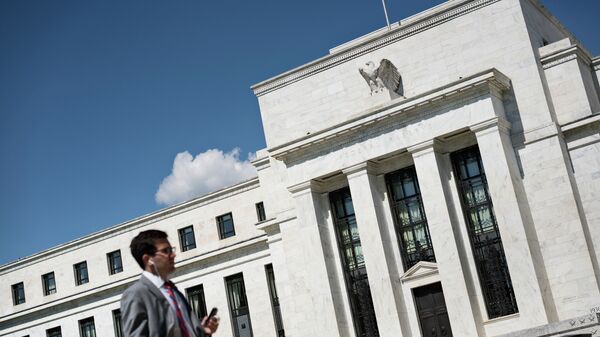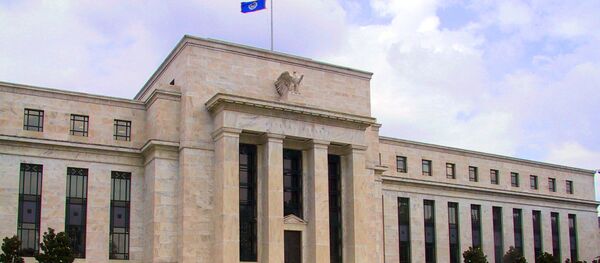Kristian Rouz – After a third revision, the Commerce Department announced 1Q16 growth hit 1.1 percent year-on-year compared to earlier estimates of 0.5 and 0.8 percent, respectively, over the past two months, with the over twofold upward revision attributed to Obamacare, technically, a mechanism of tax redistribution.
The Fed might in fact cut rates back to near-zero closer to this year’s end, and market bets on lower rates regime, or even negative rates regime (NIRP), similar to that in Japan and the Eurozone, have been recently on the rise. In market participants’ view, according to data compiled by Bloomberg, chances the Fed would cut rates by September rose to 20 percent from 10 percent a month earlier, whilst chances of a Fed hike by that same month dropped to 5 percent from 70 percent in late May.
Hardly there is any chance of rate hikes until early 2018, traders allege, with 50 percent chances of a hike seen around that point. That is, the Fed might afford to hike rates by 2018 in case the current business cycle ends without a recession. However, the Commerce Department’s GDP data did not reflect the real economy dynamics per se, since they are including healthcare contributing as part of overall growth, which is not by any means an indication of expansion in the US business activity.
"The market is pricing in a non-trivial probability of a Fed rate cut over the next couple of months," Aaron Kohli of New York-based BMO Capital Markets said. "The Fed is really boxed in now, so the market doesn’t even begin to price in any real chance of hikes until mid-2017."
Meanwhile, the Fed officials are weighing the Brexit impact to their policymaking, with Federal Reserve governor Jerome Powell having said the global risks have shifted “to the downside” in the Brexit’s aftermath.
"For some time, the principal risks to outlook have been from abroad," Powell said speaking at the Chicago Council on Global Affairs. "The Brexit vote has the potential to create new headwinds for economies around the world, including our own. As the global outlook evolves, it will be important to assess the implications for the U.S. economy, and for the stance of policy."
With the US bond market advancing rapidly, suggesting an influx in capital to the US, albeit not in the real economy, the Fed might still afford one more hike by late 2016, perhaps, in December. Yet, the regulator would likely opt to not interfere with ending business cycle, or else a rate hike might have a disruptive effect to the economy already balancing on the edge of a recession.
"The possible loss of momentum in job growth is worrisome," Powell said.
Therefore, the Fed’s data-based approach to policy would hardly allow for any hikes this year, with 2017 bearing the most uncertainty at this point, with economic developments and readjustment at the new business cycle’s start being yet impossible to evaluate at this point.
"You are not going to get any activity out of the Fed right now," James Camp of St.Petersburg, FL-based Eagle Asset Management said. "They do not want financial conditions to tighten any further and they certainly don’t want to continue this dollar stampede."
Indeed, any further appreciation of the dollar, inevitably entailing a raise in borrowing costs in the current international environment, would further undermine corporate profits, exports and domestic inflation, rendering the overall growth weaker. That is what the regulator wants the least, as the revised 1Q16 GDE indicate Obamacare contributing some 58% to growth that quarter, with recreational goods, housing and utilities, petrol expenses being other GDP drivers. Meanwhile, manufacturing, financial services and insurance, durable and non-durable goods all contracted.
There is hardly any growth in the real economy and the Fed’s approach under its current leadership and within the current policy mindset would suggest an implementation of NIRP. A shift in policy approach would be another solution, but that is a post-election matter.


